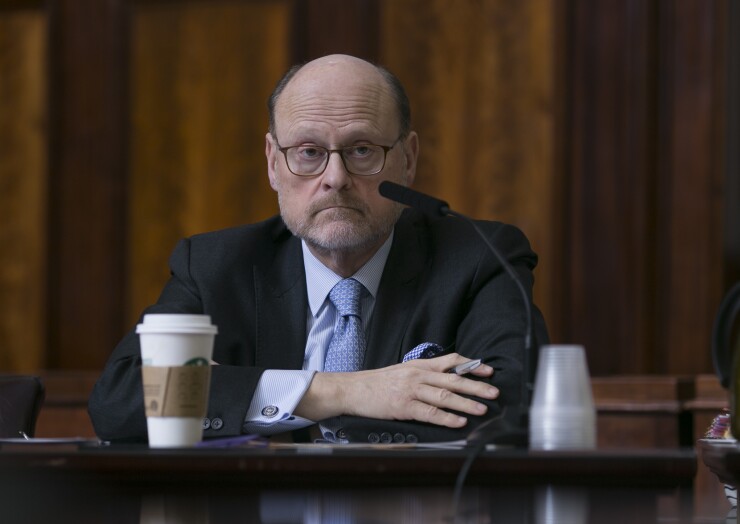Joseph Lhota will step down as chair of the New York Metropolitan Transportation Authority after two terms as head of the MTA, Gov. Andrew Cuomo announced Friday.

Fernando Ferrer, MTA’s vice chair, will serve as acting chair until Cuomo names a permanent replacement when the State Senate returns in January.
"Joe Lhota has dedicated decades of his life to public service culminating in two tours of duty at the helm of the MTA. He stabilized the subway system, appointed a new leadership structure to completely overhaul the MTA, and led with a steady hand during some of the agency's most challenging moments,” Cuomo said in a statement. “In short, Joe demonstrated time and again why he was the right person for the job. I am deeply grateful for his service to the State of New York.”

Lhota said that in 2017 he offered to become head of the MTA chair with the aim of halting the decline of service and stabilizing the system for his fellow New Yorkers.
"I want to take this opportunity to thank Gov. Cuomo for the trust and support he has given me. His non-stop drive, enormous energy and vision are re-creating a better and stronger MTA,” Lhota said. “The governor understands the over-arching importance of mass transit for the people and the economy of New York. His commitment and robust support to enhance and modernize the MTA into an integrated 21st century transportation system is unmatched and unwavering.”
Lhota said that in the first month at the MTA, the Subway Action Plan was developed and he said it has successfully arrested the subway's decline.
“The plan has produced a 34.8% decline in major subway incidents causing delays (a comparison of 9/2017 to 9/2018). In September 2018 the number of total train delays fell to the lowest point since February 2016. There is still a long way to go to achieve the performance that New Yorkers demand and deserve. The proposed Fast Forward plan provides the roadmap for modernizing the entire system,” Lhota said.
“I would say, Lhota did yeoman's work in a very difficult political environment. The MTA has at least stopped the massive erosion of service that started in 2012 and lasted until 2017,” said infrastructure expert Nicole Gelinas, a senior fellow with the Manhattan Institute for Policy Research. “And he helped put a leadership that is capable of doing the work of turning things around, but they, too, face the same political constraints. It's very difficult to tackle any real cost-cutting, for example, on the construction and the union side.”
The Tri-State Transportation Campaign noted it was time to look ahead
"Under Chairman Lhota’s two tenures at the MTA, he led the agency through the crisis of Superstorm Sandy and enabled New York Transit President Andy Byford to devise a rescue plan for our ailing subway and bus network,” said Nick Sifuentes, Tri-State's executive director. “Now we face a different crisis, and Chairman Lhota’s resignation is a chance for the agency to bring in a new leader who can devote all their attention to the most pressing need in New York today: Fixing our public transit network and preventing our city from grinding to a halt.”
Gelinas noted that Cuomo would soon choose a new chair that will face numerous challenges.
"It would be nice if the governor were confident enough, in his own standing after his landslide reelection, to name someone who can be truly independent of him and of his donor class and stand up to the governor when necessary, as that is supposed to be part of the critical checks and balances of an independent authority," she said.
Sifuentes said that "the first and most important job for any new chair of the MTA is to lead the fight in Albany to fix our subways, buses, and commuter rail. This is the yardstick by which Chairman Lhota’s replacement will be judged: Can they win the fight for the funding they need to make our region’s public transit a world leader again?"
For his part, Lhota said he has tremendous respect for all those who work at the MTA.
"Finally, anyone who knows me will have a keen understanding of the appreciation and admiration that I have for the men and women of the MTA," Lhota said. "Every day, they enable 9 million-plus New Yorkers to safely get to work, go to school, meet dates, have doctor's appointments and get home via anyone of the MTA's assets. Next time you see a subway, bus, railroad or bridge/tunnel worker, please thank them for their service."





